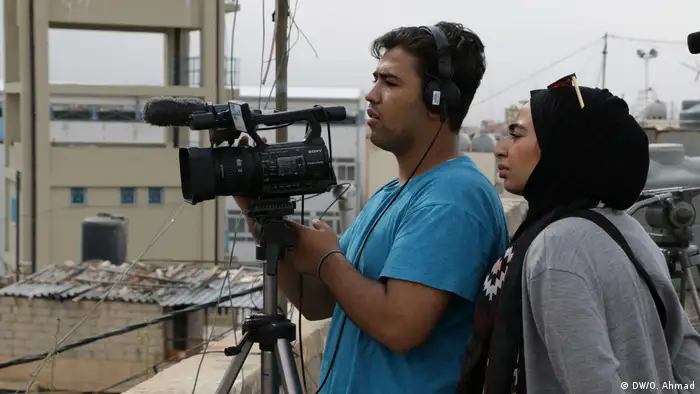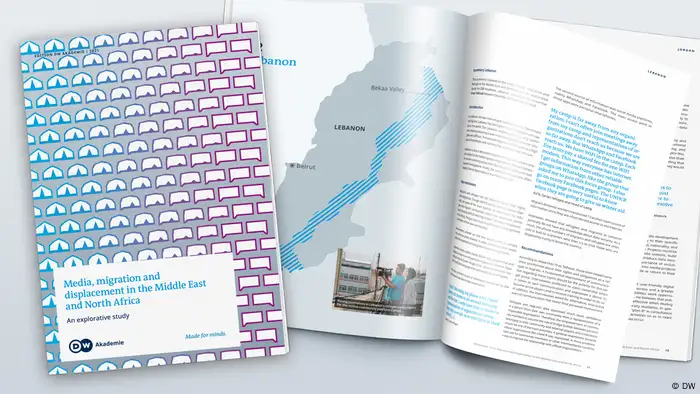Publications
Study: Media, migration and displacement in the Middle East and North Africa
DW Akademie commissioned field studies in six Middle Eastern and Northern African countries in 2019/20 to understand the communication challenges posed by migration and displacement. Available in English and French.

How is life in Shatila? Young community journalists in Lebanon's refugee camps report for the online platform Campji supported by DW Akademie
"For a refugee or migrant, a smartphone is as important as food, shelter or a lifejacket," wrote Heike Thee, project manager at DW Akademie, in the introduction to the study "Media, migration and displacement in the Middle East and North Africa" which has just been published.
Photos of refugees tapping a message on their smartphones or taking a selfie following their long, treacherous journeys have long been making the rounds on social media. Often these images unleash comments that either mock or criticize refugees. This reveals two major facts surrounding the global refugee situation: the deep-seated stereotypes of what refugees should look like and a misunderstanding of why they undertook the journey in the first place.
To better understand the situation on the ground, DW Akademie decided to dig deeper and commissioned field studies in six countries in the Middle East and North Africa on the communication challenges posed by migration and displacement.
Want a wrap up of the key findings? Watch it here
Researchers in Lebanon, Jordan, Libya, Tunisia, Algeria and Morocco conducted studies, answering questions such as:
- Who has access to reliable information and how do they access it?
- How best can humanitarian actors and media development practitioners communicate with their target communities?
- What are the most efficient tools and strategies?
The study is available for download in English and French.
This project was supported by the German Federal Ministry for Economic Cooperation and Development (BMZ).
DW recommends
Downloads
- Date 20.06.2021
- Author Heike Thee, Marlene Soulier
- Feedback: Send us your feedback.
- Print Print this page
- Permalink https://p.dw.com/p/3v72y
- Date 20.06.2021
- Author Heike Thee, Marlene Soulier
- Send us your feedback.
- Print Print this page
- Permalink https://p.dw.com/p/3v72y

